Choosing the Right Flap Disc for Grinding: Get the Best Performance
Selecting the correct flap disc is crucial for efficient and effective grinding, whether you’re working on metal, wood, or other materials. The right disc can speed up your work, improve your finish, and last longer.
Choosing the right flap disc for grinding involves considering the abrasive material (aluminum oxide, zirconia, ceramic), the grit size (coarse for removal, fine for finishing), the backing type (fiberglass, plastic, aluminum), and the flap density (standard or high density), all based on the specific material being ground, the amount of material to be removed, and the desired finish.
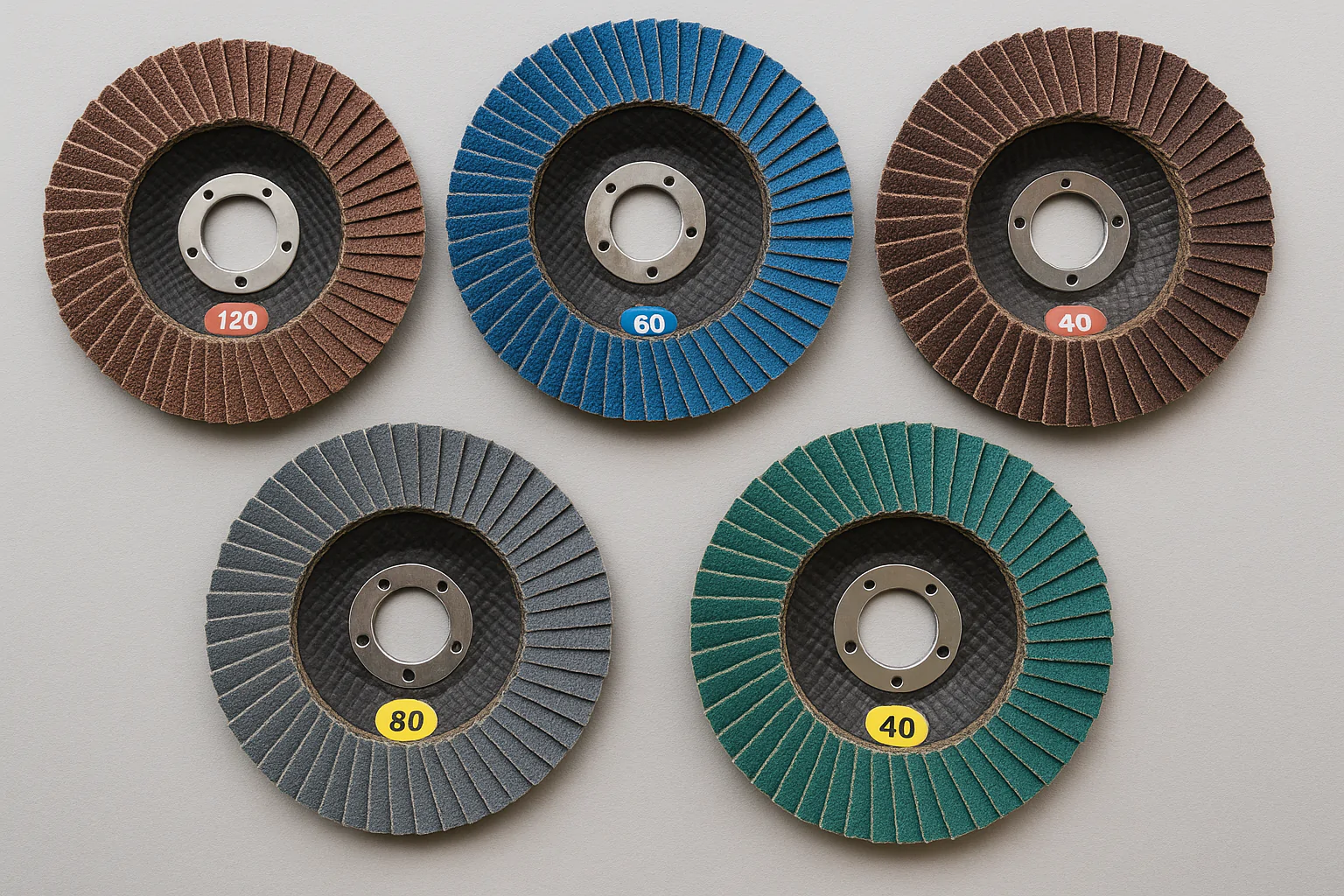
A range of flap discs showing different types.
Matching the flap disc to your application is key to maximizing performance and getting the job done right.
How to choose the right grinding disc?
Flap discs are a type of grinding disc, but there are also traditional grinding wheels. How do you choose the right disc for grinding in general?
To choose the right grinding disc, you need to consider the material being ground (metal, masonry, concrete), the required task (material removal, cutting, finishing), and the tool being used (angle grinder, bench grinder). Grinding wheels are best for heavy stock removal on metal or concrete, while flap discs excel at blending, finishing, and lighter grinding, particularly on metals, offering a less aggressive action and a better finish than a grinding wheel of comparable grit.
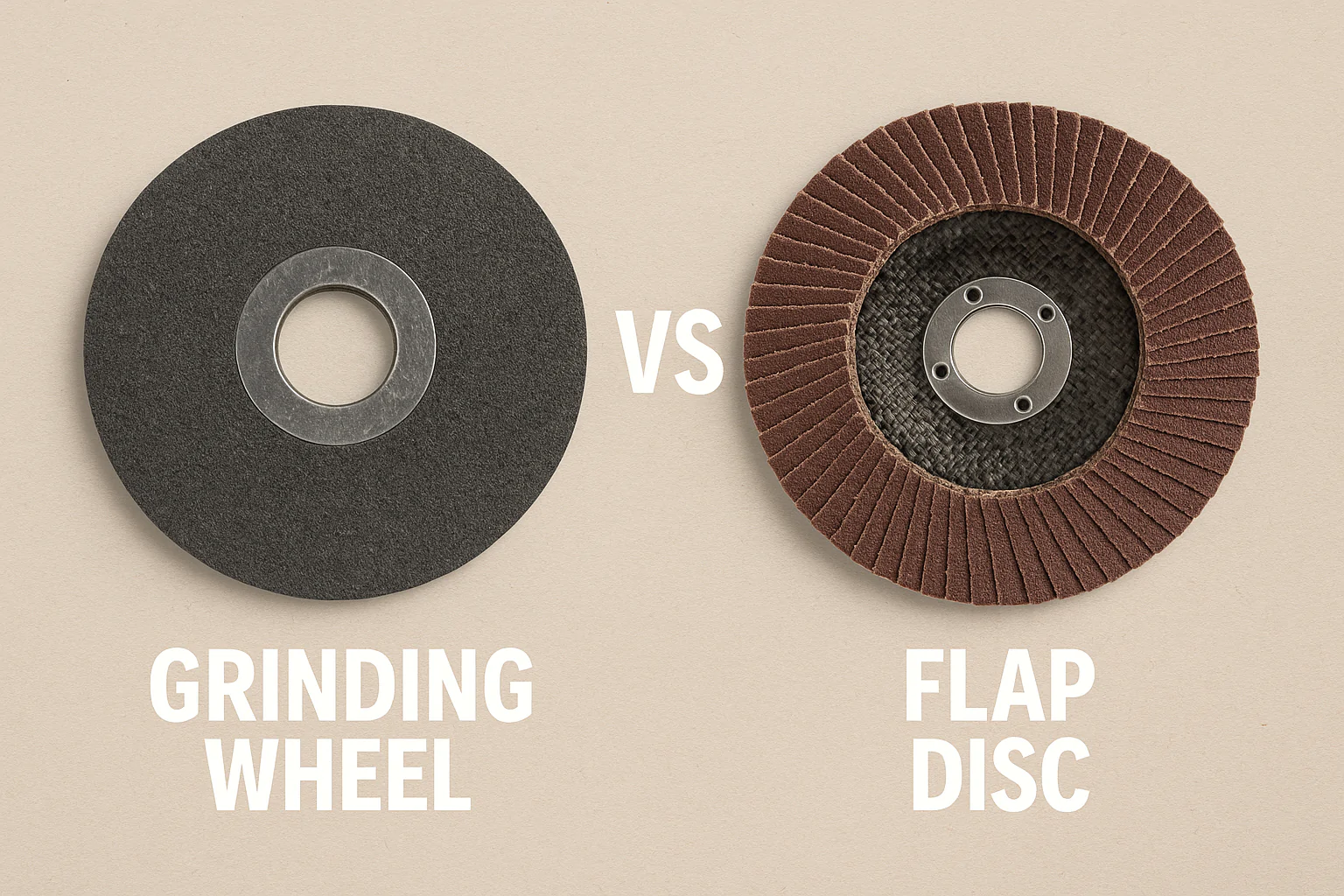
Comparing a traditional grinding wheel and a flap disc.
The choice between a grinding wheel and a flap disc often depends on the desired result and the specific material. Grinding wheels are rigid and contain abrasive grains throughout their volume. They are designed for aggressive material removal on metal, concrete, or stone. For example, they are commonly used for beveling edges on thick steel or grinding down large welds. Flap discs, on the other hand, consist of overlapping flaps of abrasive cloth adhered to a backing plate. This design makes them more flexible and less aggressive than grinding wheels. Flap discs excel at tasks like blending welds smooth, deburring edges, rust removal, and light shaping. They leave a better, more finished surface than a grinding wheel of the same grit because the flexible flaps conform slightly to the surface and the overlapping design provides a shearing action. Flap discs also generate less heat and noise than grinding wheels. For metalworking, flap discs made with zirconia or ceramic abrasives are popular because they cut effectively and last longer on steel and stainless steel. Traditional grinding wheels are usually made with aluminum oxide or silicon carbide. When choosing a disc, always match the disc type (grinding wheel or flap disc) and its specifications (abrasive type, grit, size, RPM rating) to your tool and the material you are working on. For versatile grinding and finishing on metal, a high-quality flap disc from a brand like NOVOGRIT is often an excellent choice.
What grit flap disc for grinding welds?
Grinding welds is a common task. What grit of flap disc is best suited for this?
When grinding welds with a flap disc, the best starting grit depends on the size and thickness of the weld bead and the desired speed of removal. For heavy weld removal, a coarse grit like 36 or 40 is typically used. For lighter welds or to begin blending after initial grinding, a medium grit like 60 or 80 is effective. The goal is to remove the excess weld material efficiently without gouging the surrounding metal, often followed by finer grits (like 120) for blending and finishing.
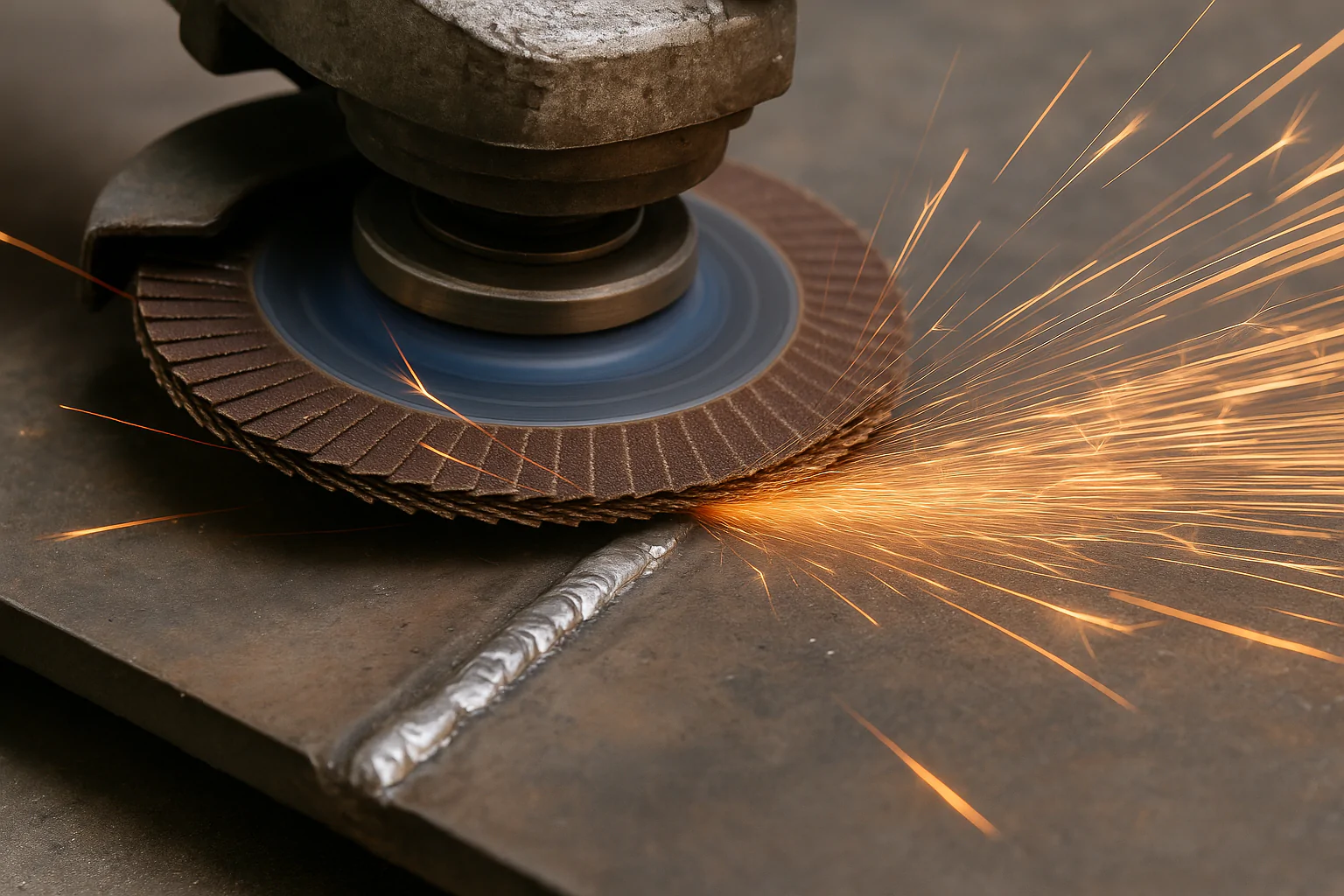
Using a flap disc to grind down a weld.
Grinding welds requires an abrasive that is tough enough to cut through hardened metal efficiently. Flap discs are excellent for this because they grind and finish in one step. For thick, raised weld beads, you need an aggressive grit to remove the bulk of the material quickly. A 36 or 40 grit flap disc, especially one with zirconia or ceramic abrasive, is designed for this heavy stock removal. These coarse grits have large, sharp particles that bite into the metal effectively. However, using very coarse grits can leave deep scratches that require more work to blend out later. For smaller welds or if you want a slightly smoother finish after rough grinding, a 60 or 80 grit flap disc offers a good balance of material removal and surface refinement. These are considered medium grits and are versatile for various welding and fabrication tasks. After using a coarse or medium grit to reduce the weld height, you would typically switch to finer grits, like 120 grit, to smooth the transition between the weld and the surrounding metal and prepare the surface for painting or further finishing. The abrasive type is also important; zirconia and ceramic flap discs are highly recommended for grinding welds on steel and stainless steel due to their durability and cutting power on hard metals. Choosing the right grit progression and using high-quality flap discs, such as those offered by NOVOGRIT, designed for metal applications, is essential for efficient weld grinding and blending.
What is the difference between 60 and 80 flap discs?
When deciding between a 60 and an 80 grit flap disc, what is the practical difference in performance?
The difference between a 60 and 80 grit flap disc lies in the size of their abrasive particles and consequently, their aggressiveness and the finish they leave. A 60 grit flap disc has larger abrasive particles than an 80 grit disc. This means the 60 grit will remove material more aggressively and faster but will leave deeper scratches. The 80 grit, with its smaller particles, will remove material less aggressively but will leave a smoother finish with shallower scratches.
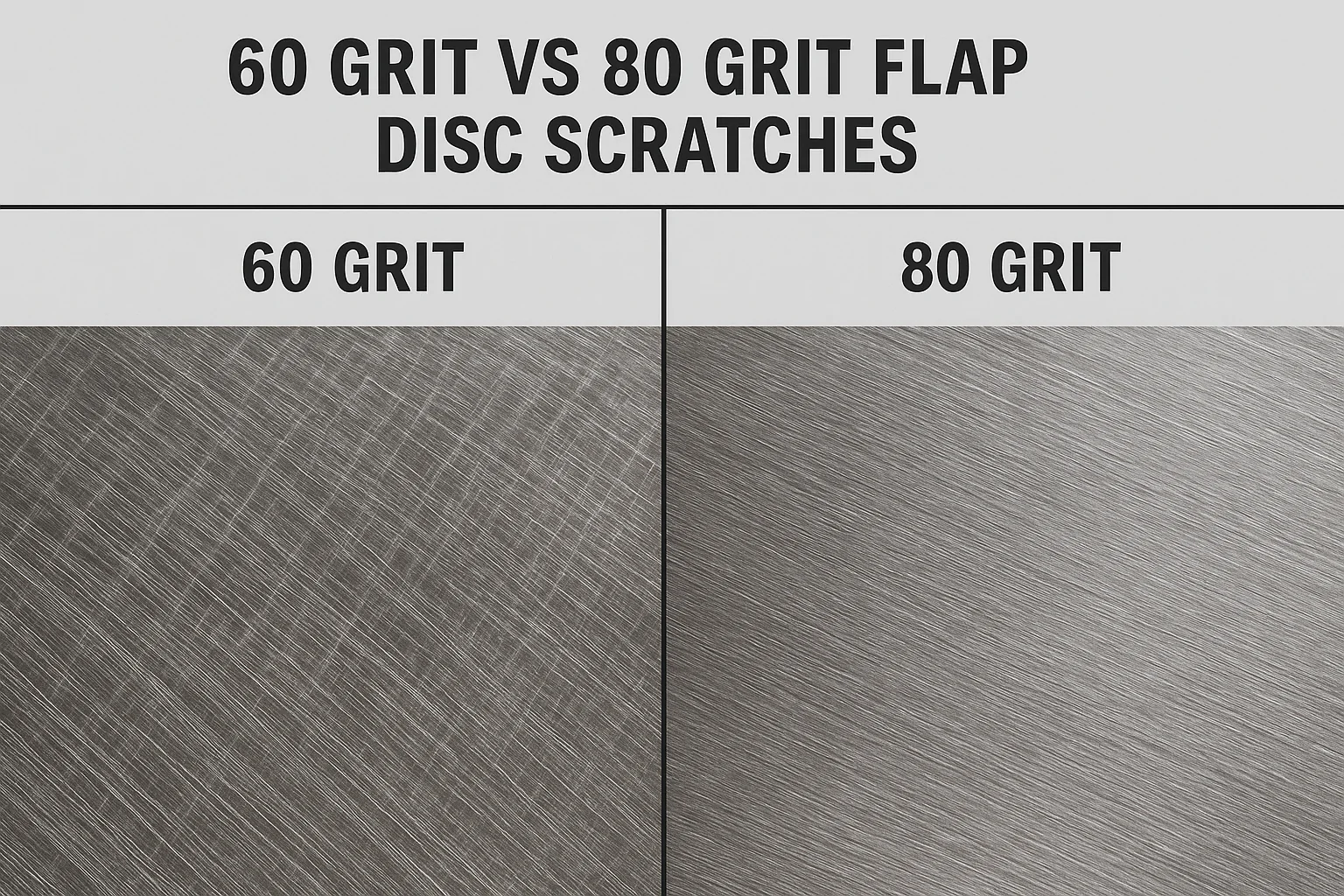
Comparing surface finish from 60 grit vs 80 grit flap discs.
This difference follows the standard rule for abrasive grit sizes: lower number equals coarser abrasive. When choosing between a 60 and 80 grit flap disc, consider the task at hand. A 60 grit disc is a good choice when you need relatively fast material removal or when working on moderately thick welds or rough surfaces. It’s more aggressive than 80 grit and will get the job done quicker if rapid stock removal is the priority. However, the scratches it leaves will be more prominent. An 80 grit flap disc is less aggressive. It’s suitable for removing lighter welds, cleaning surfaces, or when you want to start with a grit that leaves a smoother finish than 60 grit. It’s also commonly used as the next step after using a coarser grit (like 36 or 40) to refine the surface and reduce the scratch depth before moving on to even finer grits. For general-purpose grinding and blending on metal, both 60 and 80 grit are popular choices, often depending on user preference and the specific project requirements. Many users will have both grits on hand and choose based on the aggression needed for a particular part of the job. Quality flap discs from brands like NOVOGRIT offer consistent performance across these grit ranges.
What is a 36 grit flap disc used for?
Getting down to the coarsest grits, what are the typical applications for a 36 grit flap disc?
A 36 grit flap disc is one of the coarsest grits available and is primarily used for very aggressive material removal. Its applications include heavy stock removal on metal, grinding down substantial weld beads, beveling edges on thick plate, removing deep rust or mill scale, and shaping hard materials quickly. The large abrasive particles allow it to cut very fast but leave a rough finish with deep scratches, requiring subsequent steps with finer grits.
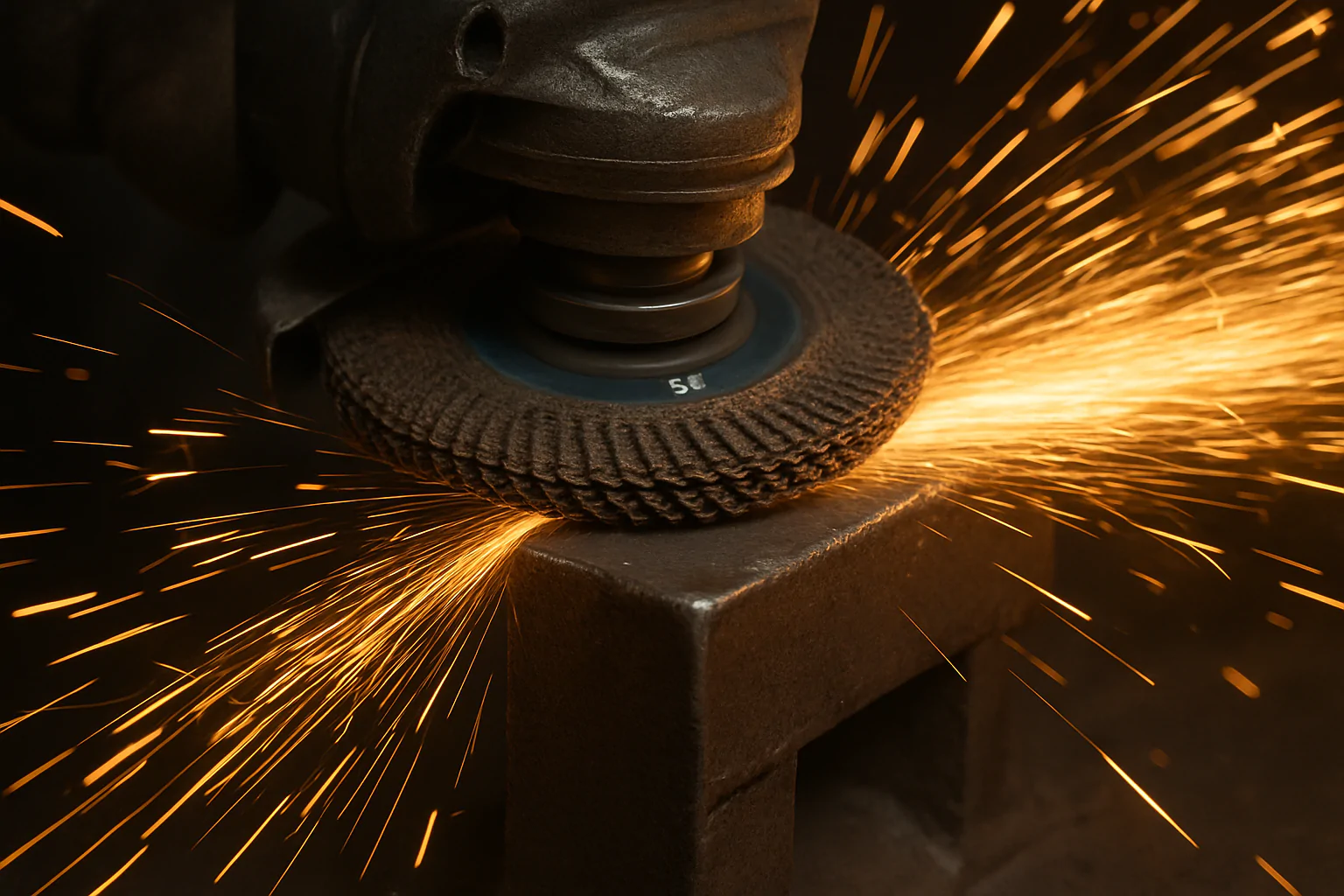
Aggressively grinding metal with a 36 grit flap disc.
When you need to remove a significant amount of material quickly, a 36 grit flap disc is the tool for the job. Its large, widely spaced abrasive particles allow it to bite deeply into the material and remove chips effectively, preventing clogging. This makes it ideal for the initial stages of fabrication and metalworking where speed is a priority over finish quality. Think about grinding down thick, uneven weld seams, chamfering heavy steel plates before welding, or rapidly removing scale or corrosion from metal surfaces. While very effective at material removal, the trade-off is the very rough finish it leaves. The scratches from a 36 grit disc are deep and highly visible. For most projects, you would never finish with a 36 grit. It’s always the first step in a grinding or sanding sequence, requiring follow-up with progressively finer grits (like 60, 80, 120, etc.) to refine the surface and remove the coarse scratch pattern. Using a high-quality 36 grit flap disc with a durable abrasive like ceramic or zirconia, such as those offered by NOVOGRIT, ensures maximum cutting speed and longevity for these demanding tasks.
Conclusion
Choosing the right flap disc involves considering the material, task, abrasive type, and grit size. Coarse grits like 36 are for heavy removal, medium grits like 60 and 80 for balancing removal and finish, and finer grits for blending. Matching the disc to the job, using quality abrasives, ensures efficient grinding and a better result.
You may also be interested in:

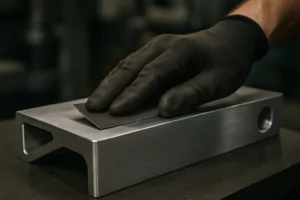
Best Sandpaper for Aluminum: NOVOGRIT's Guide to Flawless Finishes
What is the Best Type of Sandpaper to Use on Aluminum? Do you find yourself frustrated by sandpaper that gums up instantly when you try to smooth aluminum? It is
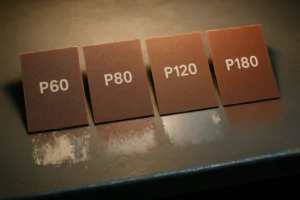
Best Sandpaper for Paint Removal: Grits, Types, & Tips | NOVOGRIT
What is the Best Sandpaper for Removing Paint? Are you tired of staring at chipped, peeling paint on your furniture, walls, or even your car? It’s a common problem, and
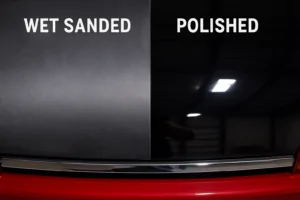
Automotive Wet Sanding: Supplies, Liquids & Best Sandpaper
Automotive Wet Sanding Supplies: What Do You Really Need? Wet sanding is a crucial technique in automotive refinishing, used to achieve a flawlessly smooth surface before painting or polishing. Unlike
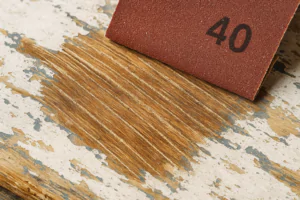
Best Sandpaper for Paint Removal & Grit Guide
What Is the Best Sandpaper for Removing Paint? Removing old paint can be a tedious job, but using the right sandpaper makes all the difference. It’s not just about grit;
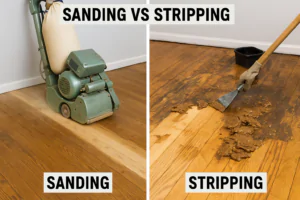
Hardwood Floor Sanding: Screen vs. Sandpaper & Best Practices
Sanding Screen vs. Sandpaper for Hardwood Floors: Which is Best? When you’re tackling hardwood floor projects, choosing the right abrasive is crucial for achieving a smooth, professional finish. Both sanding
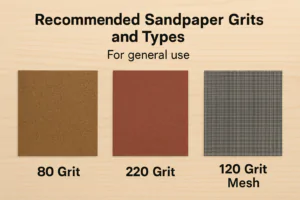
Paper Backing vs. Mesh Sanding Discs: Which Abrasive to Choose?
Paper Back vs. Mesh Sanding Discs: Which One Should You Pick? Choosing the right sanding disc backing can significantly impact your project’s efficiency and finish quality. Paper-backed discs are a
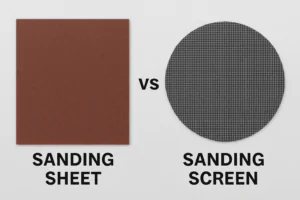
Sanding Mesh vs Paper: Which is More Economical and Better?
Is Sanding Mesh More Economical Than Sandpaper? Comparing Abrasive Costs When stocking up on abrasives, cost is always a factor. Paper sandpaper has traditionally been the standard, but newer mesh
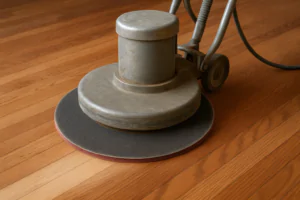
Sanding Nets & Screens Use Cases: When to Choose Mesh Abrasives
Sanding Nets and Screens: What Are Their Best Use Cases? When you encounter sanding nets or screens, you might wonder where they fit into your sanding projects. Unlike traditional solid-backed
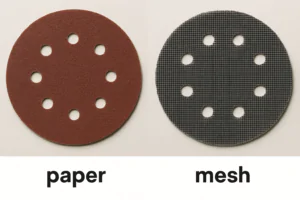
Paper vs. Mesh Sanding Discs: Which Abrasive to Choose?
Paper vs. Mesh Sanding Discs: Which Should You Buy? Choosing the right abrasive disc is essential for efficient and effective sanding. Two primary types dominate the market: traditional paper-backed discs
